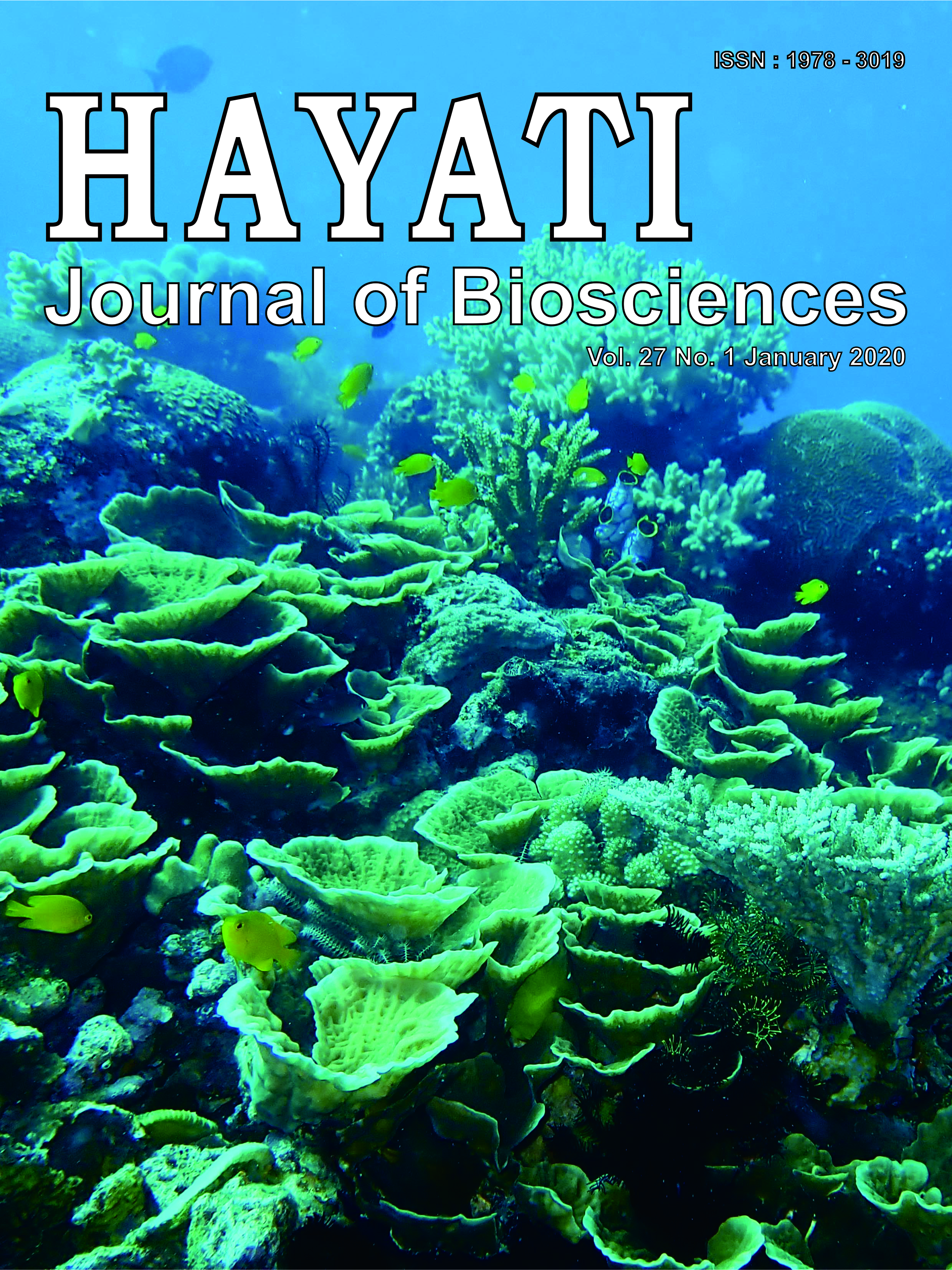Banana Flower-Insect Interaction: Alpha-Pinene as Potential Attractant for the Insect Vector of Banana Blood Disease
Abstract
Volatile metabolites are produced by plants for self-defense and as communication mediators with the environment. Terpenes are volatiles emitted as odorant cues for herbivores and microorganisms. This study was aimed to investigate volatile metabolites produced by banana flowers that attract insect vectors of BBD. The volatile metabolites from banana flowers were extracted by headspace-solid phase microextraction (HS-SPME) and identified by gas chromatography–mass spectrometry (GC-MS). It was apparent that the concentrations of the metabolite alpha-pinene gradually increased from the first to the the third stage. Comparison of metabolites produced by symptomatic banana male flowers for BBD infection with non-symptomatic ones showed that the concentration of alpha-pinene was higher in symptomatic male flowers. In addition, preference for alpha-pinene was tested on three insect vector species (Rhodesiella bhutanensis, Drosophila sp., and Musca sp.), analyzed by M. Anova p<0.001, F(1.5) =12.539 and Duncan test. Results showed that the insect vectors were mostly attracted to 20 µl volume of alpha-pinene compared to the other volumes and that alpha-pinene functioned as an attractant to these insects. This research is important for the formulation of attractants for insect vectors of BBD to control transmission of banana blood disease.
Downloads
HAYATI J Biosci is an open access journal and the article's license is CC-BY-NC. This license lets others distribute, remix, tweak, and build upon author's work, as long as they credit the original creation. Authors retain copyright and grant the journal/publisher non exclusive publishing rights with the work simultaneously licensed under a https://creativecommons.org/

























.png) IPB University
IPB University Department of Biology
Department of Biology The Indonesian Biological Society
The Indonesian Biological Society 

